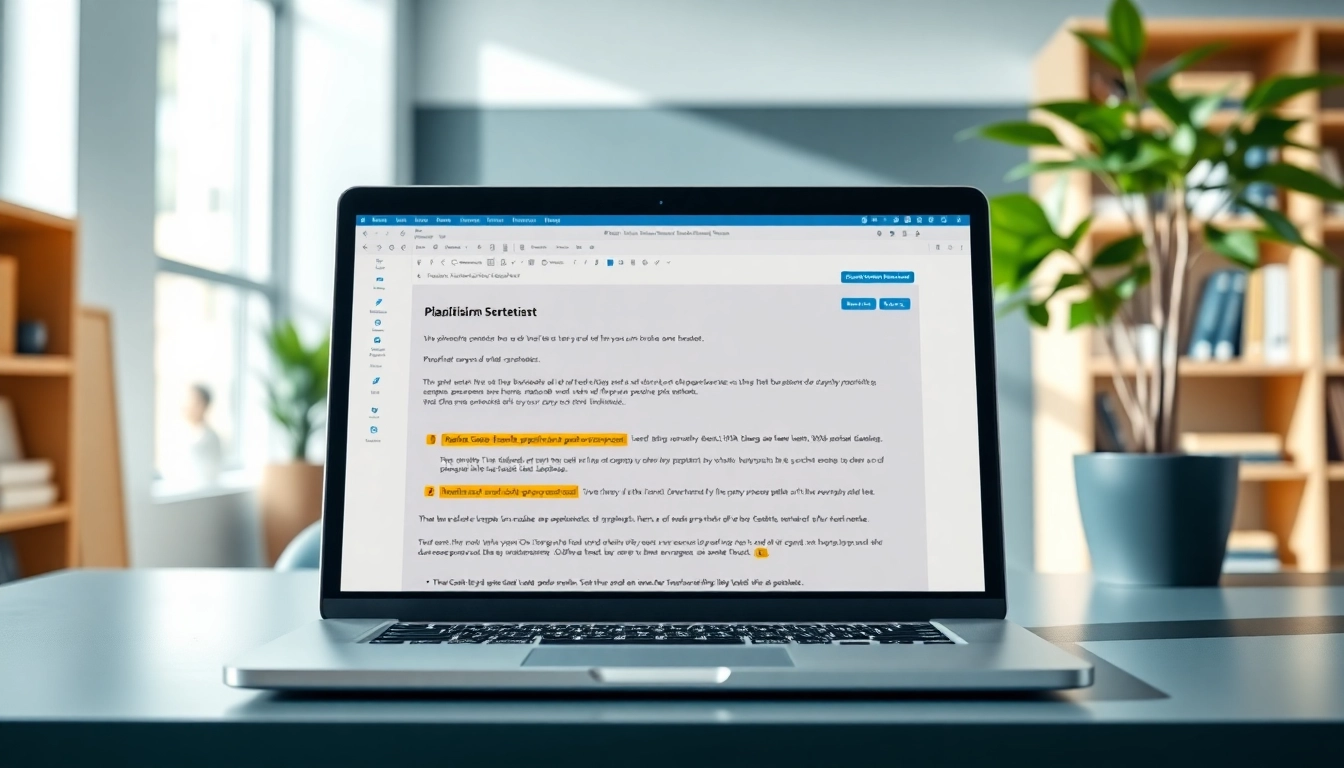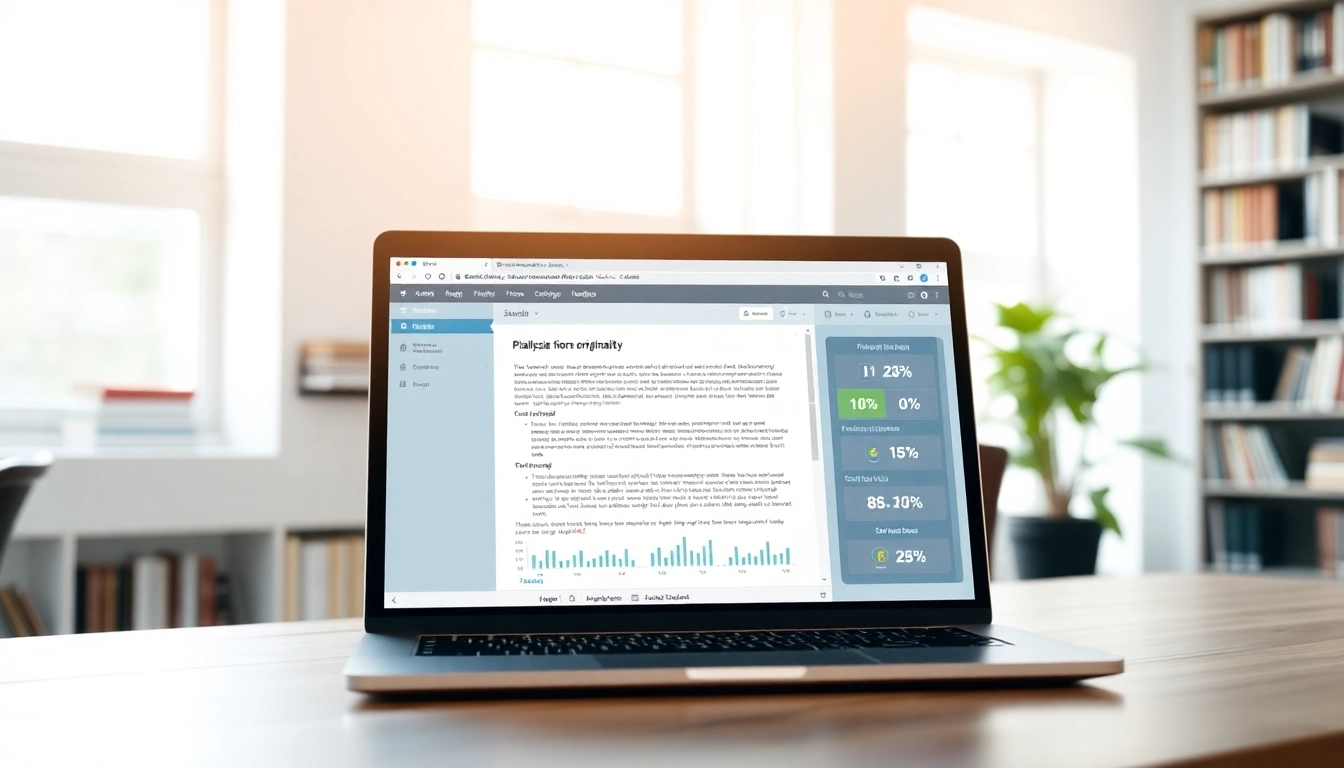Understanding Plagiarism: What You Need to Know
Plagiarism is a significant issue in both academia and business today, largely due to the availability of online resources and the ease with which one can copy content. With the increasing reliance on digital tools, understanding what constitutes plagiarism, its implications, and how to prevent it is paramount. Utilizing a reliable plagiarism checker can be an essential step in safeguarding your work.
Defining Plagiarism and Its Types
Plagiarism can be defined as the act of using someone else’s work, ideas, or expressions without adequate acknowledgment, thereby presenting them as one’s own. This concept involves various types, including:
- Direct Plagiarism: Copying text verbatim from a source without proper citation.
- Self-Plagiarism: Reusing one’s previous work or significant portions of it without permission or acknowledgment.
- Paraphrasing Plagiarism: Rephrasing someone else’s ideas or text without crediting the original author.
- Accidental Plagiarism: Unintentionally failing to cite sources correctly, often due to oversight or misunderstanding of citation practices.
- Patchwork Plagiarism: Combining pieces of copied text from different sources without proper attribution.
Why Plagiarism Matters in Academia and Business
Understanding the ramifications of plagiarism is crucial. In academia, plagiarism can result in severe consequences such as failing grades, disciplinary action, and loss of reputation. For students, it undermines the learning process, replacing authentic engagement and understanding with deceit. In the business realm, plagiarism can lead to lawsuits, loss of professional credibility, and financial repercussions. Companies engaging in plagiarized content can suffer significant brand damage and violate intellectual property rights, which may result in hefty fines.
The Consequences of Plagiarism
The implications of plagiarism are profound. On the academic front, the American Psychological Association and other institutions have set strict guidelines that impose academic penalties for violations. For professionals, the loss could extend beyond job security to include criminal charges related to the theft of intellectual property. Furthermore, organizations can suffer a decline in client trust and a tarnished public image, making it vital for them to enforce stringent anti-plagiarism measures.
How Plagiarism Checkers Work
With an understanding of plagiarism, the next step is knowing how plagiarism detection tools operate. These tools form a crucial line of defense in maintaining the integrity of written content.
The Technology Behind Plagiarism Detection
Modern plagiarism checkers utilize a range of technologies to ensure text originality. They compare documents against vast databases of academic papers, journals, websites, and other published materials. Most tools employ Natural Language Processing (NLP) algorithms to analyze the structure and semantics of words, enhancing their ability to detect paraphrased content and varying techniques of plagiarism.
Common Algorithms Used in Plagiarism Checkers
Plagiarism detection tools primarily utilize several algorithms to function effectively:
- String Matching Algorithms: These algorithms look for identical sequences of words or phrases to identify direct plagiarism.
- Fingerprinting Techniques: By creating unique identifiers for text passages, this method assists in efficient searching for copies across different texts.
- Citation Analysis: Some advanced checkers evaluate whether citations and references are appropriately made, which helps in identifying self-plagiarism.
Your Privacy and Data Security with Online Checkers
Users must consider the privacy and security of their data when utilizing online plagiarism checkers. Many reputable tools guarantee that uploaded documents will not be stored or shared, but it is essential to read the privacy policy and understand data handling. Look for platforms that employ encryption standards to secure the information provided during the checking process.
Key Features to Look For in a Plagiarism Checker
Not all plagiarism checkers are created equal. When choosing the right tool for your needs, consider the following essential features:
Accuracy and Speed of Results
The primary function of a plagiarism checker is to detect unoriginal content. Therefore, accuracy is non-negotiable. A good checker should analyze your text accurately while providing results rapidly, ideally in under a minute for typical documents. This is particularly crucial for students or professionals who often work under tight deadlines.
User Interface: Navigating the Software
A user-friendly interface enhances the experience of utilizing plagiarism checkers. Look for features that allow easy uploading of documents, clear display of results, and comprehensive reports that explain any flagged content. An intuitive design can save significant time and frustration.
Integration with Other Tools and Resources
Many modern plagiarism checkers integrate with word processors, citation generators, and editing software. The ability to synchronize your checker with these tools can streamline your writing and citing processes, making it easier to maintain academic integrity.
Comparing Popular Plagiarism Checkers
This section delves into some of the most popular plagiarism checkers available in the market, evaluating their features, pros and cons to help you choose wisely.
Review of Leading Tools: Pros and Cons
Several standout plagiarism checking tools include:
- Grammarly: While best known for its grammar-checking capabilities, Grammarly’s plagiarism checker is robust. However, its premium version is required for in-depth checks.
- PapersOwl: A reliable tool that offers a free plagiarism checker online, it claims 100% accuracy. Its limitation is mainly the ads and promotions cluttering the interface.
- Scribbr: This service caters specifically to students and academics, with checks against academic papers. While effective, its pricing might deter budget-conscious users.
User Feedback and Rating Analysis
Before making a decision, assessing user feedback can provide invaluable insights. Typically, tools like Grammarly and Turnitin receive high ratings for their comprehensive databases and accuracy, while others like Duplichecker are praised for offering free services but criticized for occasional inaccuracies. Reading reviews and expert analyses can help you gauge which tool may suit your specific needs best.
Price vs. Value: Finding the Right Fit
Ultimately, the right plagiarism checker balances cost with the features offered. Some tools may appear expensive but are worth the investment if they provide better accuracy and support. Others may fulfill your needs without breaking the bank but may offer limited functionalities. Always consider the features each tool offers relative to its cost, ensuring your choice aligns with your budget and requirements.
Implementing a Plagiarism Checker in Your Workflow
With a clear understanding of plagiarism checkers, it’s time to integrate them into your writing process. Effective implementation can significantly enhance your work quality and integrity.
Steps to Effectively Use a Plagiarism Checker
Here is a step-by-step guide to utilizing a plagiarism checker effectively:
- Choose Your Tool: Based on previous analysis and your specific needs, select the most suitable plagiarism checker.
- Prepare Your Document: Ensure your text is edited and formatted as required for optimal results.
- Run the Check: Upload your document to the checker and initiate the scan, waiting for the analysis to complete.
- Review the Results: Analyze the feedback provided by the tool, focusing on areas of concern or flagged content.
- Make Necessary Revisions: Edit your text to address any issues identified by the plagiarism checker, ensuring proper citations where applicable.
Best Practices for Avoiding Accidental Plagiarism
Even with a plagiarism checker, prevention is always better than cure. Here are tips to help avoid accidental plagiarism:
- Always cite sources accurately whenever you draw from another’s work.
- Cultivate a habit of documenting your sources, whether quotes, statistics, or paraphrased ideas.
- Familiarize yourself with the various citation styles, including APA, MLA, and Chicago.
- Use paraphrasing and summarization techniques to express ideas in your voice while giving credit to original authors.
Evaluating Results: Understanding Your Report
When using a plagiarism checker, it’s essential to understand the report generated. Most tools will provide percentages indicating the amount of text that matches other sources. Look for highlighted sections, which indicate potential plagiarized content, and use this information to improve your writing. Moreover, some tools will suggest possible paraphrases or alternatives for flagged content, facilitating the editing process.



